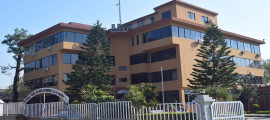
Over the years, low-cost housing schemes have been introduced by subsequent governments in Pakistan. The Korangi Town Project, Lyari Expressway Projects and Khuda Ki Basti are some of the prominent ones. However, the success of these schemes has been questionable. Different factors have played a part, including issues of project design, transparency and governance. For example, Surjani Town launched in the late 80s in Karachi lacked access to basic facilities such as water supply, schools and connectivity and accessibility to public transport. Reducing the incentive to relocate, the target community chose not to occupy the units and instead stayed back in existing locations. This further resulted in a loan default to the House Building Finance Corporation (HBFC) that was responsible for provision of mortgage finance. In Korangi Town, for example, some target beneficiaries engaged in selling off the space allotted to them. The housing gap, therefore, despite the state’s efforts in the past, still stands at 10 million units.
The World Bank estimates the annual growth in demand for housing around 400,000-700,000 units, whereas the supply side only responds by providing 100,000 – 350,000 units. The problem then is of the supply side as well. Some of the common challenges restricting supply are regulatory and legal framework, and lack of financial availability. How has this challenge, categorised as Goal 11 in the UN Sustainable Development Goals, been tackled by other countries?
Different models have been followed, including purely public, public-private partnership and purely private or philanthropic ones. Singapore’s model of housing, often regarded as the best example of public housing in the world, is purely a public scheme. In 1964, the government launched a national, universal housing project called ‘Home Ownership Scheme for the People.’ The percentage of total population residing in public- sector units has increased from 9% in 1959 to almost 80% today. A highlight of the scheme’s design is that as it is universal, it promotes a culture of neighbourhood — mixing up of different communities and income levels and uses urban density in a smart manner.
Now coming to Pakistan’s case, a national level, cohesive document ‘The National Housing Policy’ was developed in 2001 and later revised in 2013. Pakistan Mortgage Refinancing Company (PMRC) was setup to provide mortgage financing to the private financial sector that would be made available to the private financial sector for onward lending. It looks to improve the ratio of mortgage finance to GDP which currently stands at 0.25 in comparison to South Asian average of 3.4%.
The incoming PTI government has announced a low-cost housing scheme called ‘Naya Pakistan Housing Project’ that will provide five million housing units over a period of five years. As a model of PPP, it will earmark public- sector land for the scheme. The growing microfinance sector is set to be engaged as part of a multi-faceted financial model catering to different income levels.
The scheme has been criticised as being over-ambitious and unrealistic. Will it be able to uplift 40 other related sectors and subsequently lead to job creation and economic growth? These are questions that time will answer. The government must play a strategic role, involving all stakeholders with a foresight and ensuring that all sectors grow at the same pace. Evaluating their intent to serve Pakistan, I am optimistic and hopeful for the success of this rather ambitious project as it’s good to be optimistic.
Published in The Express Tribune, October 31st, 2018.
Like Opinion & Editorial on Facebook, follow @ETOpEd on Twitter to receive all updates on all our daily pieces.













































COMMENTS
Comments are moderated and generally will be posted if they are on-topic and not abusive.
For more information, please see our Comments FAQ